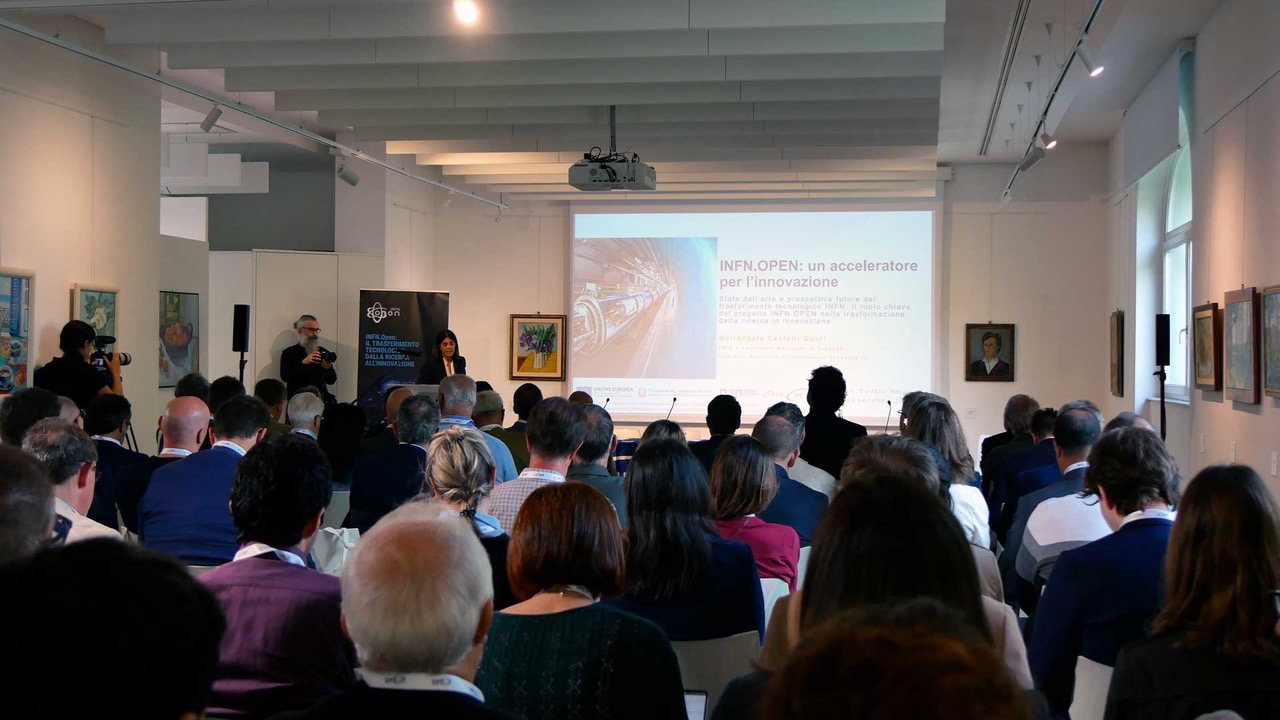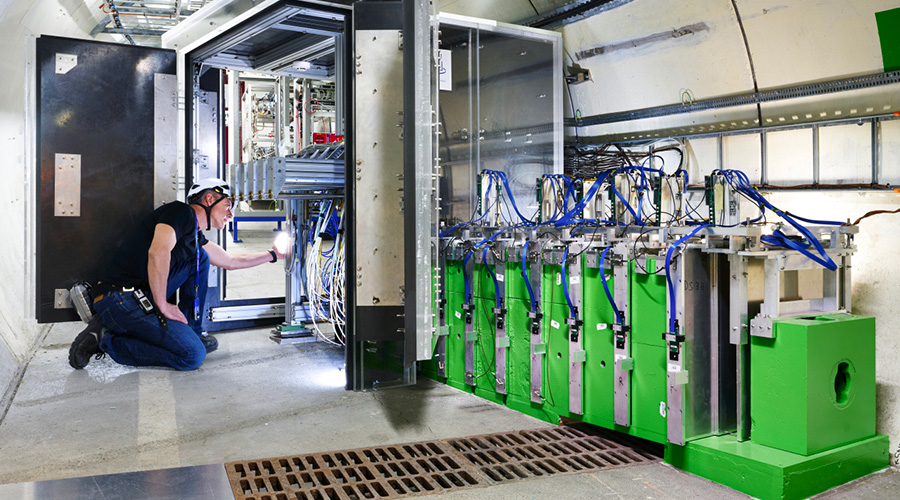- NEWSLETTER
- FOCUS NEWSLETTER IT
INFN.OPEN, TECHNOLOGY TRANSFER IS AT THE HEART OF INNOVATION

How do we promote that fruitful exchange between research and industry that brings into our daily routine technologies and innovations that can improve the quality of our lives? How can we foster the sharing of new knowledge between these two realities, which often operate in contexts so distant from each other? How can we make the communication process between the scientific and productive worlds more efficient? These are some of the questions at the centre of the day-long workshop “INFN.Open: technology transfer, from research to innovation”, held today, 18 September, at Palazzo Merulana in Rome.
Basic research needs advanced technologies that often require solutions beyond the state of the art and that are therefore not yet part of industrial know-how. The research world thus becomes a unique source of innovative technology in many fields, from superconductivity to electronics, precision mechanics, and high-performance networks. A research entity committed to the frontier of knowledge such as INFN represents a veritable gold mine for the productive world, and ultimately for society. Hence the importance of promoting and making the transfer of knowledge and technology from science to industry as efficient as possible. And this is precisely the goal of the INFN.Open project: to make the very rich heritage of technologies developed by INFN in its research activities available to the productive world, and therefore to society.
The meeting was also an opportunity to present a number of success stories that showed the potential of a system where research and innovation can become a tool of growth for the country: from the company that, thanks to the acquisition of skills in the field of cryogenics, has started new entrepreneurial activities, to the INFN spin-offs that provide innovative applications in the medical and industrial fields, to name just a few examples. The day’s proceedings concluded with a panel discussion on strategies, procedures and actions to be taken to ensure that technologies developed by research institutions such as INFN can be passed on to the productive world and society.
INFN.Open – Open INnovation from Fundamental Nuclear Research is a national project funded with approximately 1.7 million euros within the scope of the Complementary Programme to the National Operational Programme (NOP) Governance and Institutional Capacity 2014-2020, in which INFN Gran Sasso National Laboratories (LNGS) are the national intervention hub. The main objective of the project is to strengthen the management of technology transfer processes towards the business system, and to stimulate technological and industrial innovation in the country, through the vast heritage of technologies developed by INFN. Complementary Programme to the NOP Governance and Institutional Capacity 2014-2020 - AXIS 2 - Specific Objective. 2.1 - Action 2.1.1 - CUP: I55F21002820007







